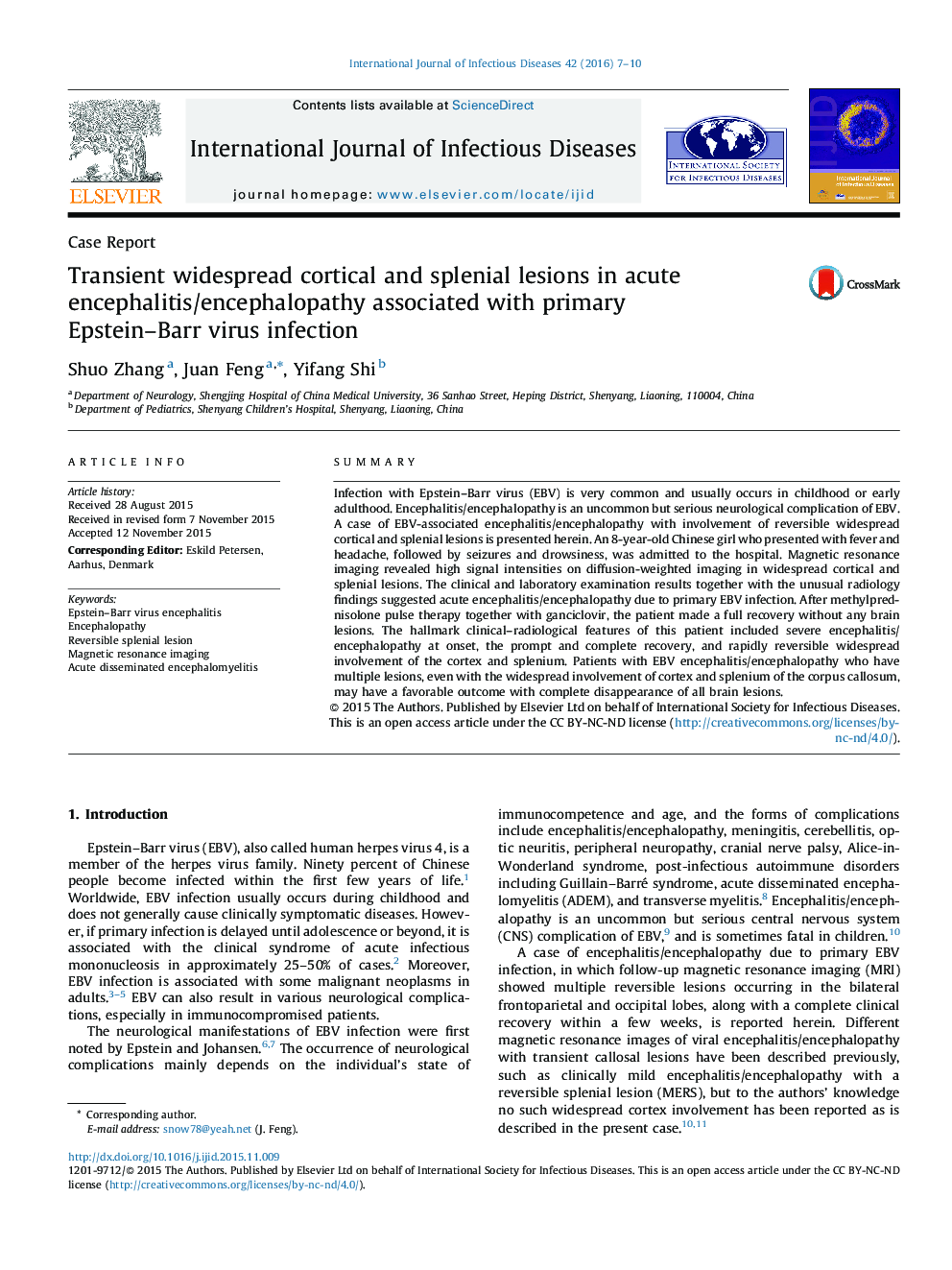| Article ID | Journal | Published Year | Pages | File Type |
|---|---|---|---|---|
| 3361694 | International Journal of Infectious Diseases | 2016 | 4 Pages |
•The case of a patient suffering from acute encephalitis/encephalopathy related to primary Epstein–Barr virus (EBV) infection is described.•Magnetic resonance imaging findings revealed unusual extended splenial and widespread bilateral cortex involvement.•The clinical–radiological recovery was rapid and complete without neurological sequelae after treatment with a glucocorticoid and ganciclovir.
SummaryInfection with Epstein–Barr virus (EBV) is very common and usually occurs in childhood or early adulthood. Encephalitis/encephalopathy is an uncommon but serious neurological complication of EBV. A case of EBV-associated encephalitis/encephalopathy with involvement of reversible widespread cortical and splenial lesions is presented herein. An 8-year-old Chinese girl who presented with fever and headache, followed by seizures and drowsiness, was admitted to the hospital. Magnetic resonance imaging revealed high signal intensities on diffusion-weighted imaging in widespread cortical and splenial lesions. The clinical and laboratory examination results together with the unusual radiology findings suggested acute encephalitis/encephalopathy due to primary EBV infection. After methylprednisolone pulse therapy together with ganciclovir, the patient made a full recovery without any brain lesions. The hallmark clinical–radiological features of this patient included severe encephalitis/encephalopathy at onset, the prompt and complete recovery, and rapidly reversible widespread involvement of the cortex and splenium. Patients with EBV encephalitis/encephalopathy who have multiple lesions, even with the widespread involvement of cortex and splenium of the corpus callosum, may have a favorable outcome with complete disappearance of all brain lesions.
